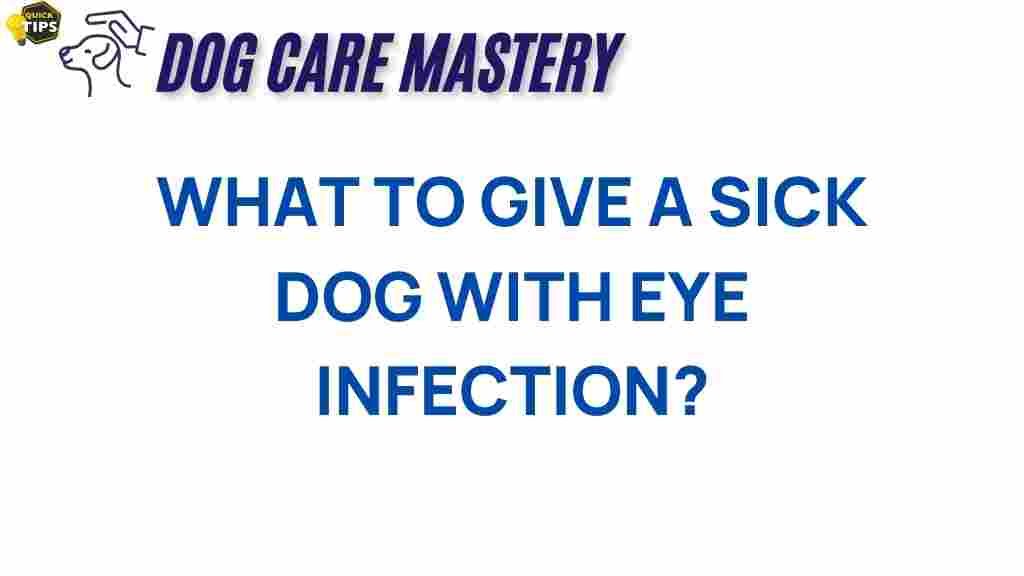Understanding Dog Eye Infection: Symptoms and Causes
Dog eye infections can be a concerning issue for pet owners, as they can lead to significant discomfort for your furry friend if left untreated. Recognizing the symptoms early on and understanding the potential causes is crucial for effective treatment. In this article, we will unveil the best remedies for your dog’s eye infection, ensuring your pet gets the relief they deserve.
Common Symptoms of Dog Eye Infection
The first step in addressing a dog eye infection is to identify its symptoms. Here are some common signs to watch for:
- Redness or swelling around the eye
- Excessive tearing or discharge
- Squinting or holding the eye closed
- Cloudiness or change in eye color
- Frequent pawing or rubbing of the eye
Causes of Dog Eye Infection
Understanding what causes dog eye infections can help prevent future occurrences. Common causes include:
- Bacterial or viral infections
- Allergies to environmental factors or food
- Foreign objects in the eye
- Underlying health conditions, such as autoimmune diseases
- Improper grooming or excessive tear production
Best Remedies for Your Dog’s Eye Infection
Once you’ve identified the symptoms and potential causes of your dog’s eye infection, it’s time to explore effective remedies. Here’s a step-by-step guide to treating dog eye infections at home.
Step 1: Clean the Affected Area
The first step in treating a dog eye infection is to keep the area clean. Here’s how:
- Use a clean, soft cloth or cotton ball dampened with warm water.
- Gently wipe away any discharge from the eye, starting from the inner corner to the outer corner.
- Ensure that you use a separate cloth or cotton ball for each eye, if both are affected.
Step 2: Use Saline Solution
A saline solution can help soothe your dog’s eye. Here’s how to prepare it:
- Mix 1 teaspoon of salt in 1 cup of warm distilled water.
- Soak a clean cloth or cotton ball in the solution.
- Gently apply it to the affected eye to help flush out any irritants.
Step 3: Apply Natural Remedies
There are several natural remedies that may help alleviate the symptoms of dog eye infections:
- Chamomile Tea: Brew a chamomile tea bag, let it cool, and use it to rinse your dog’s eye. Chamomile has anti-inflammatory properties.
- Aloe Vera: The gel from an aloe vera leaf can be applied around the eye (not directly in it) to soothe irritation.
- Apple Cider Vinegar: Dilute apple cider vinegar with equal parts water and apply it around the eye area to help combat bacteria.
Step 4: Use Over-the-Counter Medications
In some cases, over-the-counter medications can provide relief. Always consult your veterinarian before using any medications. Some options include:
- Antihistamine eye drops for allergic reactions
- Artificial tears to help with dryness
- Bacterial ointments specifically formulated for dogs
Step 5: Monitor Your Dog’s Progress
After applying these remedies, it’s essential to monitor your dog’s eyes:
- Check for improvement in symptoms within 24-48 hours.
- If symptoms worsen or do not improve, consult your veterinarian.
Troubleshooting Tips for Dog Eye Infections
Even with the best home remedies, there may be instances where your dog’s eye infection persists. Here are some troubleshooting tips:
When to Consult a Veterinarian
If your dog exhibits any of the following, it’s time to seek professional help:
- Persistent redness or swelling after 48 hours
- Severe discharge or bleeding from the eye
- Changes in vision or behavior
- Signs of pain, such as whining or reluctance to play
Preventing Future Eye Infections
Preventing dog eye infections is always better than treating them. Here are some preventive measures:
- Regular grooming to avoid matting and debris around the eyes
- Frequent cleaning of the eye area if your dog is prone to tear staining
- Keeping your dog away from known allergens and irritants
- Regular check-ups with your veterinarian
Conclusion
Understanding how to manage a dog eye infection can significantly enhance your pet’s comfort and health. By recognizing symptoms early, implementing effective remedies, and seeking veterinary assistance when necessary, you can help your furry friend recover smoothly. Always remember that prevention is key, so maintain a regular grooming routine and monitor your dog’s eye health closely. If you need more information on pet care, consider visiting this resource for further guidance.
You and your dog deserve peace of mind, and by staying informed, you can ensure they live a happy and healthy life.
This article is in the category Health and created by dogcaremastery Team
